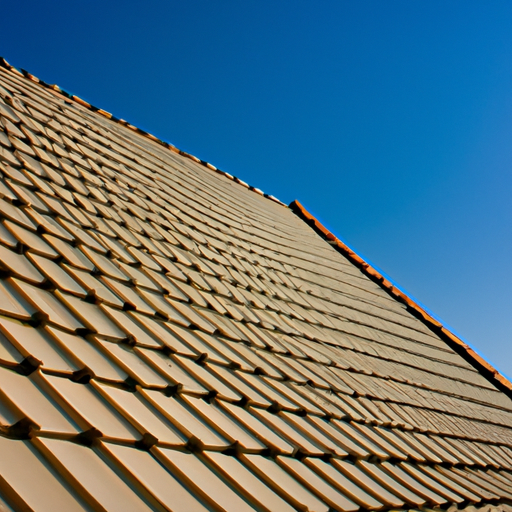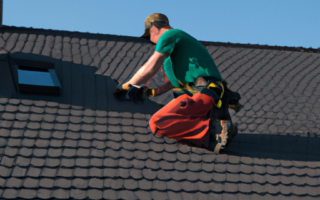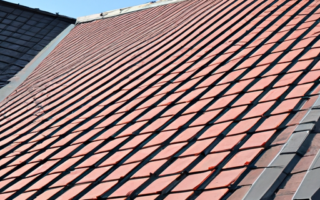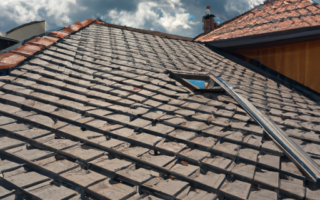Types of Roof Construction: A Comprehensive Guide
When it comes to roof construction, there are various types that homeowners and builders can choose from. Each type has its own unique characteristics, advantages, and considerations. In this comprehensive guide, we will explore the different types of roof construction, providing you with valuable insights and information to make an informed decision for your project.
1. Flat roofs: Flat roofs are commonly used in commercial and industrial buildings, but they can also be found in residential properties. They have a horizontal or nearly horizontal design, which allows for additional outdoor space and easy maintenance. Flat roofs require proper waterproofing and drainage systems to prevent water leakage.
2. Gable roofs: Gable roofs are one of the most popular and recognizable roof types. They feature two sloping sides that meet at a ridge, forming a triangular shape. Gable roofs provide excellent ventilation and are relatively easy to construct. However, they may be prone to damage in strong winds or hurricanes, requiring additional bracing.
3. Hip roofs: Hip roofs are similar to gable roofs but with all sides sloping downwards towards the walls. This design provides increased stability, making hip roofs ideal for areas with high winds or hurricanes. They also offer more attic space and allow for better drainage. However, hip roofs can be more complicated and costlier to build compared to gable roofs.
4. Gambrel roofs: Gambrel roofs, also known as barn roofs, have a distinct barn-like appearance with two slopes on each side. They provide ample space for storage or additional living areas in the attic. Gambrel roofs are commonly found in farmhouses or Dutch Colonial-style homes.
5. Mansard roofs: Mansard roofs have a unique design with two slopes on all four sides. They create additional living space, often used for attics or living quarters. Mansard roofs are commonly associated with French architectural styles.
6. Shed roofs: Shed roofs have a single sloping surface and are often used for smaller structures like sheds, garages, or extensions. They are simple in design and cost-effective to construct.
7. Butterfly roofs: Butterfly roofs have a V-shape design, where two roof surfaces slope upwards, creating a butterfly-like appearance. This unique design provides superior rainwater collection, making it a more sustainable option. Butterfly roofs are commonly used in modern and eco-friendly architecture.
Choosing the right type of roof construction depends on various factors, such as the climate, architectural style, and personal preferences. Consider consulting with a professional contractor or architect to determine the most suitable option for your specific needs.
In conclusion, understanding the different types of roof construction is essential when planning a new construction or roofing project. Each type has its own advantages and considerations, so it’s crucial to assess your requirements and consult with professionals to make an informed decision. By selecting the right type of roof, you can ensure durability, functionality, and aesthetic appeal for your property.
It would cover the advantages and disadvantages of each type, along with their suitability for different kinds of buildings.
Roof construction plays a crucial role in the overall strength and functionality of a building. There are several types of roof designs, each with its own set of advantages and disadvantages. It is important to carefully consider the different types of roof constructions to ensure the most suitable choice for a particular building.
Types of Roof Constructions
1. Pitched Roof:
A pitched roof is a traditional style characterized by its steep slope. It is commonly seen in residential buildings and provides excellent drainage, preventing water accumulation. The steep slope also allows for better ventilation and increased attic space. However, pitched roofs can be more complex and expensive to construct compared to other roof types.
2. Flat Roof:
A flat roof has a horizontal or nearly horizontal surface. It is often used in commercial buildings and offers easy accessibility for maintenance purposes. Flat roofs also provide additional space for rooftop installations such as solar panels and HVAC units. However, they require regular maintenance to prevent water pooling and leakage, and their lifespan may be shorter compared to pitched roofs.
3. Mansard Roof:
A mansard roof, also known as a French or curb roof, is characterized by its four sloping sides. This design offers additional living or storage space in the attic while providing an aesthetically pleasing appearance. Mansard roofs are commonly found in historical and Victorian-style buildings. However, they can be more expensive to construct and may require regular maintenance to prevent issues such as leakage.
4. Hip Roof:
A hip roof has slopes on all four sides, creating a pyramid-like shape. This design offers excellent stability and resistance against strong winds and extreme weather conditions. Additionally, hip roofs provide eaves all around, protecting the walls from potential water damage. However, hip roofs can be more complex and time-consuming to construct, resulting in higher labor and material costs.
Design Factors
When determining the appropriate roof construction for a building, several factors should be considered:
1. Climate: The climate of a specific region plays a significant role in choosing the right roof type. For areas with heavy snowfall or rainfall, a steep-sloped roof may be more suitable for efficient drainage.
2. Building Purpose: The purpose of the building, whether residential, commercial, or industrial, should be considered when selecting a roof design. For instance, a flat roof may be ideal for commercial buildings where easy accessibility is required.
3. Budget: The available budget will also influence the choice of roof construction. Some designs, such as mansard roofs, are generally more expensive to build compared to others.
Maintenance Tips
Maintaining the roof is essential to ensure its longevity and durability. Here are some maintenance tips:
1. Regular Inspections: Schedule regular inspections to identify any signs of damage or deterioration. Early detection and repair can prevent further problems.
2. Clear Debris: Regularly remove debris such as leaves, branches, and dirt from the roof surface to prevent clogging of drainage systems.
3. Address Leakage Promptly: If any leakage is detected, act promptly to fix the issue to avoid further damage to the roof structure and interior of the building.
4. Trim Overhanging Trees: Trim tree branches that hang over the roof to prevent damage from falling limbs and minimize the accumulation of debris on the roof.
By considering the advantages and disadvantages of different roof types, as well as the specific requirements of the building, one can make an informed decision about the most suitable roof construction. Regular maintenance will further ensure the longevity and functionality of the roof, protecting the building and its occupants for years to come.
Design Factors to Consider in Roof Construction
When it comes to roof construction, there are several design factors that need to be considered to ensure a structurally sound and aesthetically pleasing outcome. These design factors play an essential role in determining the type of roof, its slope, the materials used, and its overall functionality.
One of the primary design factors to consider is the climate in which the structure is located. The roofing system should be designed to withstand the specific weather conditions, such as heavy snowfall, strong winds, or intense heat. For example, in areas prone to heavy snowfall, the roof should have a steeper slope to allow snow to slide off easily and prevent excessive weight accumulation.
The architectural style of the building is another important factor to take into account. The roof design should complement the overall design of the structure. For instance, a traditional, historic building may require a more intricate and decorative roof design, while a modern, minimalist building may call for a simple and sleek roof.
The intended use of the building is also crucial in determining the design factors for roof construction. Commercial buildings might have specific requirements, such as the installation of rooftop HVAC units or solar panels. The roof design must accommodate these additional features while maintaining the integrity and functionality of the structure.
Another factor to consider is the budget allocated for the roof construction. Different roofing materials vary in cost, durability, and maintenance requirements. It is important to strike a balance between budget constraints and the desired longevity and performance of the roof.
Lastly, local building codes and regulations have a significant impact on roof design. These regulations ensure that the roof meets safety standards and fire resistance requirements. It is essential to consult with local authorities and obtain necessary permits before proceeding with the construction.
In conclusion, the design factors to consider in roof construction encompass the climate, architectural style, intended use of the building, budget constraints, and local building codes. By carefully evaluating and incorporating these factors, a well-designed and functional roof can be achieved, providing protection and adding value to the structure for years to come.
It would cover aspects like load-bearing capacity, weather resistance, insulation, ventilation, and aesthetic considerations. It would emphasize the importance of proper planning and highlighting key design considerations.
Roof construction plays a crucial role in the overall functionality and durability of a building. The type of roof chosen, its design factors, and proper maintenance all contribute to its efficiency and longevity. This article aims to delve into these aspects, covering key considerations such as load-bearing capacity, weather resistance, insulation, ventilation, and aesthetic appeal.
One of the primary design factors when it comes to roof construction is the load-bearing capacity. The roof must be able to support the weight of not only the materials used but also external elements such as snow accumulation or HVAC systems. During the planning phase, it’s essential to calculate the anticipated loads and ensure that the structural system can handle them effectively.
Weather resistance is another critical aspect to consider during roof construction. The roof should be able to withstand various weather conditions, including heavy rain, strong winds, and even hailstorms. Choosing the right roofing materials, such as metal or asphalt shingles, can significantly impact the roof’s ability to resist damage from these elements.
Insulation is also essential in roof construction, as it plays a vital role in energy efficiency. Proper insulation can help regulate temperature and reduce heat loss, resulting in lower energy consumption and cost savings. Different insulation materials, such as fiberglass or foam board, offer varying levels of thermal resistance, and choosing the right one depends on the climate and specific building requirements.
Ventilation is often overlooked but equally important in roof construction. Proper airflow helps prevent condensation, mold growth, and overheating. It also extends the lifespan of the roof by reducing the risk of moisture damage. Incorporating ridge vents, soffit vents, or mechanical ventilation systems can greatly enhance the roof’s ventilation capacity.
While functionality and performance are crucial, aesthetic considerations should not be ignored during roof construction. The roof’s design and materials should complement the overall architectural style of the building. Whether it’s a sloped roof with gable ends or a flat roof with a modern aesthetic, the visual appeal of the roof can significantly enhance the curb appeal and overall value of the structure.
Proper maintenance is key to ensuring the longevity and performance of any roof. Regular inspections, cleaning of debris, and prompt repairs are essential to identifying and addressing potential issues before they worsen. Additionally, scheduling professional inspections after severe weather events can help detect any damage that may not be immediately visible.
In conclusion, roof construction involves careful consideration of load-bearing capacity, weather resistance, insulation, ventilation, and aesthetics. Proper planning and design are crucial to ensure a functional and durable roof. Regular maintenance and inspections are equally important to address any issues promptly and prolong the roof’s lifespan. By paying attention to these factors, homeowners and builders can create roofs that not only protect their structures but also stand the test of time.
Essential Tips for Roof Maintenance
Maintaining your roof is essential to ensure the longevity and durability of your home. Regular roof maintenance can help identify potential issues before they turn into major problems and can save you from costly repairs down the line. Here are some essential tips for roof maintenance:
1. Inspect Regularly: Schedule regular inspections of your roof, preferably twice a year – in spring and fall. Look for any signs of damage such as cracked or missing tiles, rusty metal, or loose shingles. Pay attention to areas around chimneys, vents, and skylights, as these are common trouble spots.
2. Clean Gutters: Clogged gutters can lead to water backup, which can damage your roof and contribute to leaks. Clean out debris such as leaves, branches, and dirt from your gutters and downspouts regularly. Ensure that they are securely attached and properly functioning.
3. Trim Overhanging Branches: Tree branches hanging over your roof can cause damage in strong winds or storms. Trim any overhanging branches to prevent them from scraping against the roof or falling on it during severe weather.
4. Remove Debris: Keep your roof free from debris such as leaves, twigs, and branches. Accumulated debris can hold moisture, which can lead to rot or moss growth. Use a roof broom or a leaf blower to remove debris gently.
5. Check for Leaks: Look for signs of leaks inside your home, such as water stains on the ceiling or walls. If you notice any signs of a leak, address it immediately to prevent further damage and protect the structural integrity of your roof.
6. Insulate Your Attic: Proper attic insulation can regulate the temperature inside your home and prevent heat from escaping through the roof. This can help reduce the formation of ice dams in cold climates and minimize the risk of roof damage.
7. Avoid Walking on the Roof: While inspecting your roof, it’s best to stay off it as much as possible. Walking on the roof can cause accidental damage to the shingles or tiles, especially if they are old or fragile. If you need to access the roof, consider using a sturdy ladder or hiring a professional.
8. Hire Professional Help: If you’re not comfortable with inspecting or maintaining your roof on your own, it’s always a good idea to hire professional help. Experienced roofers can spot potential issues that may go unnoticed and perform repairs or maintenance tasks efficiently.
By following these essential maintenance tips, you can take proactive measures to keep your roof in excellent condition. Remember, regular inspections and timely repairs can save you from expensive roof replacements in the long run.
It would cover topics like regular inspections for damage, cleaning and debris removal, gutter maintenance, repairs, and the importance of professional inspections. It would stress the significance of proactive maintenance to extend the lifespan of the roof and prevent costly problems.
Regular maintenance is a crucial aspect of roof construction that often gets overlooked. Taking care of your roof through regular inspections and proactive maintenance can significantly extend its lifespan and prevent costly problems down the line. This article will cover the importance of regular inspections, cleaning and debris removal, gutter maintenance, repairs, and the significance of professional inspections.
Regular Inspections for Damage
Regular inspections are vital in identifying any damage or potential issues on your roof. Weather elements such as hail, heavy rain, or strong winds can cause shingles to loosen or damage flashing. Additionally, age-related wear and tear can lead to leaks or structural problems. By conducting regular inspections, preferably twice a year, you can identify and address these issues promptly.
Cleaning and Debris Removal
Leaves, branches, and other debris can accumulate on your roof over time. This debris can clog gutters, retain moisture, and cause damage to the shingles or underlying materials. Regular cleaning and debris removal are necessary to maintain the roof’s integrity and prevent water damage. It is recommended to clean your roof at least once a year or as needed, especially after heavy storms or periods with significant debris accumulation.
Gutter Maintenance
Gutters play a crucial role in guiding water away from your roof and foundation. Regular gutter maintenance includes clearing out any debris, checking for clogs, and ensuring proper alignment. Neglected gutters can result in water pooling on the roof, leading to leaks, mold growth, or even structural damage. It is essential to clean and inspect your gutters at least twice a year or more frequently if you live in an area with high foliage or frequent storms.
Repairs
Addressing any issues promptly can prevent small problems from turning into expensive repairs. If you notice loose or missing shingles, damaged flashing, or signs of water infiltration such as stains or sagging ceilings, it is crucial to schedule repairs as soon as possible. Regular inspections can help you identify these issues early on, allowing for timely repairs and the prevention of further damage to your roof and home.
Importance of Professional Inspections
While regular inspections performed by homeowners are essential, professional inspections are equally significant. Hiring a skilled roofing professional at least once every few years can provide a more thorough assessment of your roof’s condition. These professionals have the expertise and knowledge to identify hidden issues that may not be apparent to untrained eyes. Their expertise can help detect potential problems before they escalate, saving you significant costs in the long run.
Proactive maintenance is key to extending the lifespan of your roof and avoiding expensive problems. Regular inspections, cleaning and debris removal, gutter maintenance, timely repairs, and periodic professional inspections are all important aspects of roof maintenance. By investing time and effort into proper care, you can ensure the longevity and durability of your roof while safeguarding your home from potential water damage.
Importance of Professional Roof Construction and Repairs
When it comes to roof construction and repairs, it is of utmost importance to hire a professional roofing contractor. A well-constructed and well-maintained roof not only enhances the aesthetic appeal of your home but also protects it from various environmental factors.
One of the key reasons to opt for professional roof construction is the expertise and experience that these contractors bring to the table. They are trained in designing, constructing, and repairing roofs of different types and materials. Whether it’s a flat roof, pitched roof, or a specialized design, professional contractors have the knowledge and skills to handle the job effectively.
Professional roof construction ensures the use of quality materials, which is crucial for the durability and longevity of your roof. Contractors have access to high-quality roofing materials and can recommend the most suitable options for your specific requirements. They will also ensure that the installation process is carried out correctly, adhering to industry standards and local building codes.
Another significant advantage of hiring professionals is the warranty and insurance coverage they provide. Reputable roofing contractors offer warranties on their workmanship as well as the materials used. This gives you peace of mind, knowing that your investment is protected and any issues that arise will be addressed promptly.
In addition, professional roof construction and repairs can save you time and money in the long run. DIY roof repairs may seem like a cost-effective option initially, but they often lead to further damage and costly repairs down the line. Professionals have the necessary tools, equipment, and skills to identify and fix any underlying issues, ensuring that your roof remains in top condition for years to come.
Maintaining a well-constructed roof is essential for its longevity and performance. Regular inspections and maintenance by professionals can help identify any potential problems early on, allowing for timely repairs. They can also provide valuable advice on proper roof maintenance practices, such as cleaning gutters, removing debris, and trimming nearby trees.
In conclusion, professional roof construction and repairs are vital for the overall integrity and durability of your roof. By hiring experienced contractors, you can ensure the use of quality materials, expert craftsmanship, warranty coverage, and long-term cost savings. Invest in professional roof construction to protect your home and enjoy a sturdy and reliable roof for years to come.
It would highlight the expertise, experience, and equipment needed to ensure a high-quality and durable roof. It would also discuss the potential risks and consequences of DIY roof projects and emphasize the value of investing in professional services.
When it comes to roof construction, it is crucial to prioritize quality and durability. A well-constructed roof not only protects the property from external elements but also enhances its overall aesthetics. However, achieving a high-quality roof requires expertise, experience, and proper equipment.
One of the key factors in roof construction is design. Different types of roofs require different design approaches, taking into account factors such as the climate, the slope of the roof, and the materials used. Professional roofers possess the knowledge to determine the most suitable design for a specific property, ensuring optimal functionality and longevity.
While some homeowners may consider DIY roof projects to save money, it is important to recognize the potential risks and consequences associated with such endeavors. Improper installation or the use of incorrect materials can lead to leaks, damages, and costly repairs in the future. Moreover, DIY projects lack the experience and expertise that professionals bring to the table, increasing the likelihood of errors.
Investing in professional services for roof construction provides numerous benefits. Roofing professionals have extensive experience in the field and stay updated with the latest industry practices. They have the necessary equipment to handle the job efficiently and safely, ensuring a high-quality outcome. Additionally, professional roofers often offer warranties, providing peace of mind to homeowners in case of any issues arising in the future.
In terms of maintenance, regular inspections and upkeep are essential to prolonging the lifespan of a roof. Professional roofers can identify and address potential issues, such as damaged shingles, leaks, or inadequate ventilation. They possess the knowledge to implement appropriate maintenance strategies, preventing small problems from snowballing into major repairs.
In conclusion, roof construction requires expertise, experience, and proper equipment to ensure a high-quality and durable result. While some may consider DIY projects to save costs, the risks and consequences outweigh the benefits. Investing in professional services not only guarantees a well-designed and long-lasting roof but also offers peace of mind. Regular maintenance by professionals is crucial to avoid costly repairs down the line. When it comes to the roof over your head, it is best to leave it to the experts.



